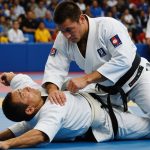Understanding the Needs of Dancers in Strength Training
Dancers possess unique physiological demands that influence their approach to strength training. Unlike general athletes, dancers require a balance of flexibility, endurance, and strength to enhance performance while maintaining aesthetic fluidity. Consequently, their training must adapt to these specific requirements to prevent muscle imbalances and enhance functionality.
Engaging in improper strength training can lead to common injuries such as tendinitis, stress fractures, and muscle strains, which are more prevalent in dancers due to their intense routines and physical demands. Such injuries often stem from inadequate muscle support for the grueling techniques dancers perform, highlighting the necessity for a well-designed strength program.
In parallel : Maximizing gymnastics potential: how proprioceptive training enhances athletic excellence
To tackle these unique challenges, a tailored approach to dancer strength training is indispensable. Developing a personalized training regimen not only addresses the specific needs of the dancer’s body but also mitigates the risk of injury. This includes incorporating exercises that promote joint stability, core strength, and balanced muscle development. By understanding and respecting the unique biomechanics of dance, trainers can craft programs that blend strength with grace, ensuring dancers are well-prepared to meet the demands of their art form while minimizing the risk of injury.
Safety Tips for Dancers during Strength Training
Navigating through strength training safety can be a pivotal aspect of a dancer’s regimen. To prevent injuries, integrating a thorough warm-up and cool-down routine is essential. This not only prepares the muscles for exertion but aids in injury prevention by gradually increasing heart rate and flexibility.
This might interest you : Maximizing athletic potential: exploring how wearable tech revolutionizes training and progress monitoring
A dancer should focus on proper technique when performing exercises, especially those involving lifting. This includes maintaining an appropriate posture, engaging the core, and breathing correctly to distribute weight safely across the body. Key methods vary depending on the movement, but typically involve a controlled execution that mitigates unnecessary strain.
Equally important is the art of listening to your body’s signals. Whether it’s muscle fatigue or unexpected sharp pains, recognising these indicators allows dancers to adjust intensity, ensuring long-term health and performance. Overlooking such signs can lead to persistent injuries, affecting not only strength training but performance as well.
Remember:
- Warm-ups enhance muscle readiness.
- Correct form and posture are vital.
- Acknowledge bodily feedback.
Implementing these tips can significantly improve a dancer’s strength training results while prioritizing safety, thus empowering them to harness their full potential with confidence.
Effective Strength Training Exercises for Dancers
A solid strength training routine can significantly enhance a dancer’s performance, promoting not just flexibility but also muscle engagement and endurance throughout the entire body.
Lower Body Strength Exercises
Incorporating strength exercises targeting the legs and core stability is essential for dancers. Focus on movements that enhance balance and control. Squats and lunges are particularly effective, tailored to meet dancers’ needs for dynamic movement control. These exercises help in boosting leg strength while maintaining dance fitness. Proper technique ensures these workouts improve power and flexibility without sacrificing the fluidity of movements essential in dance.
Upper Body Strength Exercises
Upper body strength is crucial for a dancer as it supports posture and line. Emphasize exercises that fortify muscle engagement in the shoulders, arms, and back. Techniques like push-ups and shoulder presses are recommended, provided they are executed with an eye on maintaining flexibility. The idea is to build strength without bulkiness, preserving the sleek lines important in dance.
Core Strengthening Techniques
Core strength underpins all dance movements. A strong core aids in balance, posture, and the ability to perform intricate dance routines. Integrating Pilates and yoga-based exercises can significantly enhance core stability. Practices like the plank or bridge exercises are excellent for muscle engagement, culminating in improved dance performance and reduced injury risk.
Nutrition Guidelines for Dancers Engaging in Strength Training
Understanding the nutritional needs of dancers is fundamental, especially when engaged in strength training. Unlike general athletes, dancers require precise fueling of their bodies to ensure peak performance and recovery. This starts with a focus on essential macronutrients: proteins, carbohydrates, and fats.
Proteins are crucial for muscle repair and growth, aiding recovery after intense dance routines and strength sessions. Carbohydrates serve as the primary energy source, essential for sustaining long rehearsals, while healthy fats support overall cellular function and hormone regulation.
Equally important is hydration, a commonly overlooked aspect of dancer nutrition. Proper hydration levels significantly impact performance, as dehydration can lead to early fatigue and decreased coordination. Dancers should aim to drink water consistently throughout the day and especially before and after training.
The timing and preparation of meals play a pivotal role. Consuming well-portioned meals and snacks before and after workouts helps maintain energy levels and facilitates muscle recovery. A combination of lean meats, whole grains, and colourful vegetables provides a balanced intake. Planning and preparing meals in advance can help dancers meet their dietary needs without stress, ensuring they are always ready to train at their best capacity.
Success Stories and Testimonials from Dancers
Many dancer testimonials reveal how embracing strength training leads to remarkable transformations in both strength and performance. In various success stories, dancers share their journeys from injury or stagnation to achieving new heights in their art form.
One testimony comes from a ballet dancer who experienced chronic missteps due to lack of strength. By incorporating a tailored strength training routine, the individual saw a substantial reduction in injuries. Not only did the custom regimen bolster their muscles, but it also enhanced their endurance, allowing a more expressive presence on stage.
Another case spotlights a contemporary dancer transitioning to strength training to break through a plateau in performance. The programme emphasized core stability and limb strength, which translated into improved control and fluidity of movements. This enhanced the dancer’s ability to execute complex choreography with finesse.
The dancers underscored the role of strength training in boosting confidence through physical and mental empowerment. Engaging in regular strength exercises ensured sustained energy levels and sophisticated artistry in performances.
Strength training results illustrate an unequivocal impact on dancers’ lives, showcasing improved technique, resilience, and vitality—a compelling reason to incorporate these practices into dance regimens.











